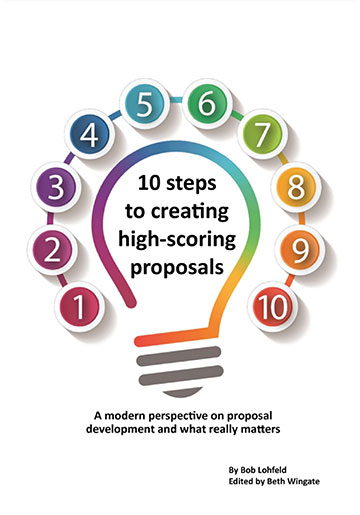How to Survive and Thrive Under FAR Part 39 Changes

This is one in a series on the impact of the Revolutionary Federal Acquisition Regulations (FAR) Overhaul (RFO) changes on government contractor (GovCon) business development, capture, and proposal programs. This article focuses on changes to FAR Part 39 – Acquisition of Information and Communications Technology. The article identifies the opportunities and risks that industry growth teams face as a result of FAR 2.0 acquisition policy changes.
Introduction to FAR 2.0
On May 6, 2025, the Office of Management and Budget (OMB) launched Phase 1 of the FAR RFO, also called FAR 2.0[1], to reduce red tape and empower agencies to buy more flexibly and be more mission-aligned. The changes proposed for FAR 2.0 are implemented as FAR deviation guidance, with formal change approvals planned for late FY25 and beyond.
FAR 2.0 shifts the acquisition regulation paradigm to decentralize acquisition authority, focus federal regulation on statutory compliance, and empower agencies to develop agile, mission-first frameworks. The specific revisions to FAR Part 39 primarily affect government procurement professionals at acquiring agencies, altering both the scope and statutory foundation of Part 39 in response to the increasingly intertwined nature of information technology (IT) and communications technology.
This article details the proposed changes to FAR Part 39 – Acquisition of Information and Communications Technology and explores their implications for capture, proposal, oversight, and procurement professionals alike.
Overview of FAR Part 39 Evolution
The original FAR Part 39 was added to the FAR in the mid-1990s, in response to the passage of the Information Technology Management Reform Act (ITMRA), which was combined with the Federal Acquisition Reform Act (FARA) to form the basis for the Clinger-Cohen Act of 1996[2] (40 U.S.C. Chapter 113). The Clinger-Cohen Act required agencies to modernize their approach to IT procurement through capital planning, performance metrics, mission alignment, and the empowerment of agency Chief Information Officers (CIOs).
FAR Part 39 implemented the principles of the Clinger-Cohen Act by prioritizing mission alignment, cost-effectiveness, and performance outcomes for federal agencies acquiring IT. The original FAR Part 39 encouraged agencies to consider lifecycle costs, manage risk proactively, favor commercial and non-developmental solutions over custom systems, and ensure that IT investments were tied to measurable improvements. It also, albeit briefly, addressed issues like accessibility and interoperability in IT acquisition.
Table 1 provides a high-level view of the FAR 2.0 revision of FAR Part 39, which shifts focus to accelerating acquisition timelines, promoting interoperability, and ensuring that federal technology solutions are inclusive, adaptable, and responsive to rapid technological advancements. Notably, the FAR 2.0 revision changes the name of FAR Part 39 from “Acquisition of Information Technology” to “Acquisition of Information and Communications Technology (ICT),” in recognition of today’s highly integrated systems for managing, moving, and transforming information. Consistent with the overall intent of FAR 2.0, the revised FAR Part 39 promotes modern acquisition best practices, including agile procurement, modular contracting, digital accessibility, and the secure deployment of emerging technologies. The changes also add procedural detail for compliance with Section 508 of the Rehabilitation Act.[3]
Table 1. FAR 2.0 revision of FAR Part 39 Acquisition of Information and Communications Technology (ICT) promotes modern acquisition best practices.
| Previous FAR Part 39 Focus | New FAR Part 39 Direction |
| Traditional IT systems | Broader ICT (hardware, software, platforms, services) |
| Optional accessibility language | Mandatory Section 508 integration and documentation |
| Up-front lifecycle funding | Modular, incremental delivery (under 18 months) |
| Technical specifications and resumes | Performance outcomes and usability metrics |
Examining the Shift in FAR Part 39 Approach
Table 2 summarizes the significance and impact of changes to the FAR Part 39 approach.
Table 2: Significance and impact of FAR Part 39 changes.
| Title and Revised FAR 39 Reference | Description of Change | Implication |
| Expanded Scope § 39.001(a) | Expands scope from IT to information and communication technology (ICT), including all ICT-enabled supplies and services. | Minimal impact on GovCon growth teams—change reflects current reality. |
| Modular Contracting § 39.102(d) | Recommends incremental delivery schedule for modules on a 180-day award/18-month delivery timeline. | Industry needs to promote solutions that fit the modular delivery model, with proof that delivery can be made within 18 months. |
| Services Acquisition § 39.103 IT | Prohibits minimum experience or education requirements for IT services unless justified. | Firms must shift from individual qualifications-based staffing justifications to providing proof that proposed personnel can deliver the performance based outcome. Language is ambiguous on whether proposal evaluations can score additional value if industry offers both. |
| ICT Accessibility Standards § 39.104 | Emphasizes statutory foundation and need for compliance with Section 508 of the Rehabilitation Act of 1973 (29 U.S.C. 794d) accessibility requirements, exceptions, exemptions, and documentation obligations. | Proposed solutions must show compliance with Section 508—industry will have to acquire or develop additional expertise in accessibility issues. |
| Exemptions § 39.104-5 | Mandates alternative access must be provided when an accessibility exemption is determined, and supporting documentation must be maintained in the contract file. | GovCon teams must prepare for additional administrative burden that accompanies exemptions. |
| ICT Accessibility in IDIQs and Orders § 39.201, § 39.301 | Clarifies that accessibility compliance (or exemptions) is addressed at the task or delivery order level, not necessarily at IDIQ award. | Contractors competing for IDIQ contracts must anticipate accessibility compliance obligations will be part of task order proposals. |
For Government Buyers: What’s New
GovCon BD and program staff should understand that the FAR 2.0 update imposes new obligations on acquisition officials, including contracting officers and program managers.
- Document accessibility from the start. Section 508 compliance is now a default requirement. Exemptions must be justified in writing, accompanied by a legal or programmatic rationale. Expect oversight—audit agencies, such as DCAA, IGs, or internal QA teams, may flag insufficient exemption documentation.
- Market research must go deeper. Market research should identify products with accessibility features. Pre-solicitation phases will likely require new templates and checklists, including Voluntary Product Accessibility Templates (VPATs)[4].
- Modular contracting is not optional. Deliverables should be broken into smaller, time-bound modules. Large, multi-year contracts that lack modular structure may now be viewed as noncompliant unless properly justified.
For government buyers, failing to document accessibility or modular delivery may result in audit findings, delayed approvals, or increased vulnerability to protests.
For GovCon: What You Need to Do
Contractors can no longer rely on generic past performance and compliance language. You’ll need to be explicit and current.
- Update your proposal templates. Add specific accessibility features and include documentation, like VPATs, for any commercial software.
- Embrace modular solutions. Demonstrate your ability to deliver in modular phases of 18 months or less. Focus on measurable outcomes and phased implementation.
- Avoid overselling legacy tools. If a solution does not meet Section 508, clearly disclose this and provide a mitigation plan. Misrepresenting compliance poses legal risks and may lead to protests.
For contractors, proposals that ignore these changes or use outdated terminology could be rejected before technical evaluation.
What This Means for Capture, Proposal, and Oversight Professionals
Provide proof of your ability to succeed rather than statements of confidence. FAR Part 39 reflects FAR 2.0 emphasis on achieving outcomes rather than stating qualifications. Capture teams must:
- Mine corporate project data for evidence that the company has experience with modular deliveries and has been successful in delivering outcomes in less than 180 days.
- Mine corporate project data for evidence that proposed personnel have been successful in delivering performance-based outcomes.
🔍 Tip: It’s more important than ever that companies make performance data on recent and current contracts available and easily searchable to capture and proposal teams.
Corporate infrastructure must account for additional administrative effort for Accessibility. FAR Part 39 strengthens the mandate for accessibility, as well as the process for granting exemptions and exceptions. Corporate Human Capital teams must:
- Budget and plan for providing human capital specialists who can help with administration and compliance with Section 508 requirements.
Conclusions
FAR 2.0 marks a foundational shift from a centralized rulebook to a decentralized acquisition framework. These changes align with the April 2025 Executive Order, “Restoring Common Sense to Federal Procurement,” which calls for:
- Removing unnecessary regulations.
- Empowering agencies to meet mission needs.
- Encouraging simplicity, speed, and commercial engagement.
GovCon leadership must prepare now for these changes! Key FAR Part 39 takeaways include:
- Plan to provide evidence of success in delivering performance-based outcomes for ICT services in your ICT proposals. Merely stating individual qualifications will be considered non-compliant. This has major implications for how your company curates and stores project information.
- Understand that mandates for accessibility and the need for industry to document alternative access, exemptions, and exceptions will create additional costs that may be allowable but not billable.
If you need help applying new FAR regulations to your next capture or proposal, please contact Lohfeld Consulting; our experienced contracting officers and subject matter experts (SMEs) can assist you.
Relevant Information
By Bruce Feldman and Jacob Bertram
Bruce Feldman, Vice President, Lohfeld Consulting Group. Bruce brings more than 30 years of experience as a subject matter expert (SME) in business development, capture management, and proposal development specializing in Space and National Intelligence programs for the U.S. Air Force (USAF), U.S. Space Force (USSF), Intelligence Community (IC), Office of the Secretary of Defense (OSD), Department of Defense (DOD) 4th Estate, and Combatant Commands. He leads Lohfeld Consulting Group’s Artificial Intelligence (AI) initiatives and is the lead trainer for our Generative AI for Proposal Professionals classes, a trainer for our Capture Management and Strength-Based Winning® classes, as well as a consulting advisor.
Jacob Bertram is a senior leader in the federal procurement industry with over 20 years of experience spanning GSA, the Department of Energy, DCMA, and DCAA. He currently advises Fortune 500 companies, government agencies, and federal contractors on acquisition strategy, pricing, audit readiness, and operational efficiency. Jacob is DAWIA Level III certified in Contracting and a member of the Defense Acquisition Corps.
Lohfeld Consulting Group has proven results specializing in helping companies create winning captures and proposals. As the premier capture and proposal services consulting firm focused exclusively on government markets, we provide expert assistance to government contractors in Capture Planning and Strategy, Proposal Management and Writing, Capture and Proposal Process and Infrastructure, and Training. In the last 3 years, we’ve supported over 550 proposals winning more than $170B for our clients—including the Top 10 government contractors. Lohfeld Consulting Group is your “go-to” capture and proposal source! Start winning by contacting us at www.lohfeldconsulting.com and join us on LinkedIn, Facebook, and YouTube(TM).
Sources:
[2] https://dodcio.defense.gov/portals/0/documents/ciodesrefvolone.pdf
[3] https://www.section508.gov/manage/laws-and-policies/
[4] https://www.itic.org/policy/accessibility/vpat
Paperback or Kindle
10 steps to creating high-scoring proposals
by Bob Lohfeld
contributors Edited by Beth Wingate
Subscribe to our free ebrief
Teaming friends, frenemies, and enemies—12 tips to mitigate harmful effects
Did you know that contracting officers spend up to 20% of their time mitigating disputes between teaming partners? In an informal poll we conducted on LinkedIn last month, 40% of respondents classified their teaming partners as “frenemies” on their last bid.
Explore Further
- Advice (539)
- AI (28)
- APMP (18)
- Army MAPS Contracts (3)
- Business Development (294)
- Capture Management (266)
- Complex Technology Grants Services (26)
- Favorite Books (5)
- GenAI (4)
- Go-to-Market (27)
- Graphics (5)
- Lohfeld Books (2)
- NASA SEWP VI Contracts (2)
- Navy SeaPort-NxG Contracts (2)
- NIST MSE Grants (1)
- NIST NAPMP Grants (2)
- Past Performance (63)
- Post-submission Phase (14)
- Pre-RFP Preparation (264)
- Proposal Management (339)
- Proposal Production (75)
- Proposal Reviews (38)
- Proposal Writing (107)
- Pursuit Phase (108)
- Research Report (4)
- Resources (63)
- Tools & Tips (421)
- Training (13)
- Uncategorized (223)

Sign Up for INSIGHTS and Download your FREE book
We'd love to help you with your proposals. Enjoy our complimentary Lohfeld Consulting Group Capture & Proposal Insights & Tips book with your FREE subscription to our Insights Newsletter.
GET YOUR FREE BOOK



